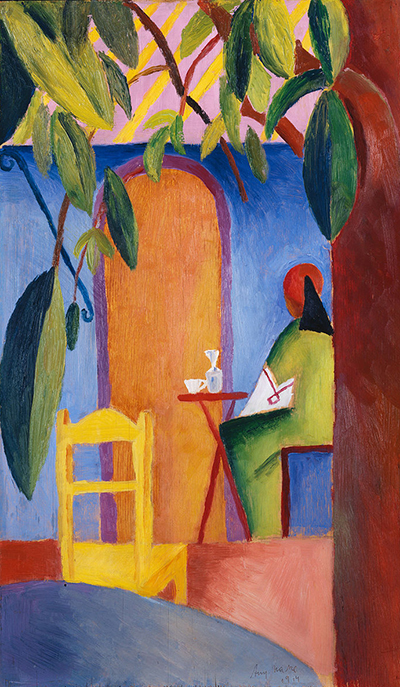August Macke produced Turkisches Cafe in the spring of 1914 during his trip to Tunis which heralded a new direction in his career. He was joined on this journey by two other creative sparks, namely Paul Klee and Louis Moilliet.
It is likely that Turkisches Cafe (Turkish Cafe) would have been painted back in Germany, once the artist had returned from his travelling. He made a whole series of sketches during his trip, as well as a number of watercolour paintings whilst learning more about this exciting and cultural region. Macke would then use these drawings as a basis for a series of paintings that he produced in Bonn after returning to the comfort of his own studio. It was here that he could have everything that he needed and working would be easier and more comfortable.
The artist's experiences from Tunis were still very clear in his mind, and those emotions could be put to good use through paintings such as this. There were many elements of this region in North Africa that would inspire changes in the artist's work, with perhaps the clean, abundant light being the most important, as well as the bright colours that flood this region's culture, through architecture, fashion and cuisine. Many other artists have also been inspired by the unique atmosphere to be found in and around there, including The Carpet Merchant, The Snake Charmer and Prayer in the Mosque by Jean-Leon Gerome who himself is known to have spent time in both North Africa and also the Middle East.
As a reward for his financial assistance towards the trip, Macke would gift his two versions of this cafe to Bernhard Koehler. Some have since claimed that the inspiration for this work came from a visit to Café des Nattes in Sidi-Bou-Said. One can see how the artist reduced a complex scene into simple blocks of colour, whilst still enabling the viewer to understand the various elements of the composition. This was the direction in which his work was progressing at this stage, also partly influenced by the work of Robert Delaunay. Sadly, Macke would die fairly soon after these paintings and so we will never know quite how his career might have developed in the latter years.




